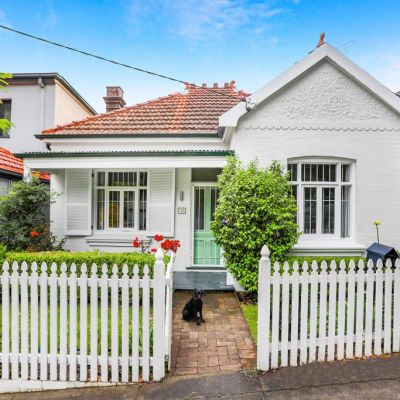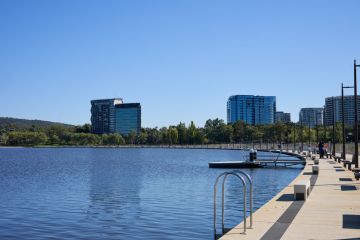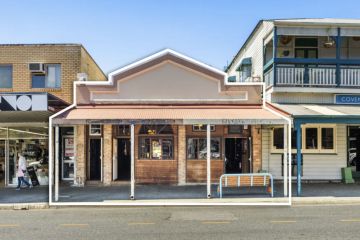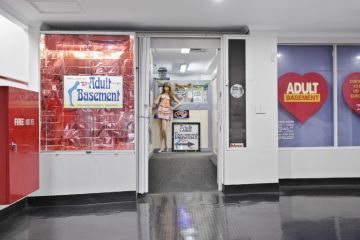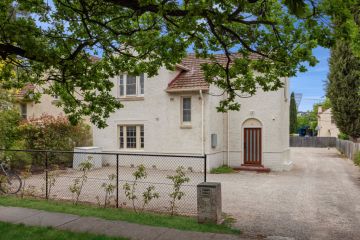The graphs that show it’s a landlord’s market – and has been for decades
The slower pace of rental growth offers little relief for tenants as a severe supply shortage keeps affordable housing out of reach for many, with rental vacancy rates well below a balanced market.
Australia has been in a landlord’s market for much of the past two decades, research shows, except for when the pandemic hit.

Historically, the rental market is considered balanced when there is a vacancy rate of 3 per cent, which is said to strike a reasonable balance between the supply of available rental properties and the demand from tenants.
The national rental vacancy rate was well below that in June at 1.3 per cent, edging up from 1.2 per cent in May, figures from SQM Research show.
Melbourne’s rental vacancy rate rose to 1.8 per cent in June, up from 1.7 per cent a month earlier, with 340 more properties advertised for rent.
In Sydney, the vacancy rate rose slightly from 1.5 per cent in May to 1.6 per cent in June.
It comes after separate figures from Domain last week showed the pace of rental growth has eased from once-breakneck speed, although rents remain at record highs.
While vacancy rates have picked up slightly relative to “those all-time lows we had from 2022 to 2024,” they are still below long-time averages, SQM Research managing director Louis Christopher said.
Twenty-year SQM data shows February 2024 as having the lowest vacancy rate at 1 per cent, with only 5288 dwellings available for rent.
“After the lockdowns lifted, we had a surge of international students, migration, people moving back … from interstate and the country,” he said, adding that not enough homes were being built. “That created the squeeze.”
The lack of housing availability paints an even bleaker picture when compared to June 2005, when Melbourne’s vacancy rate was at 3.9 per cent. Sydney’s vacancy rate was 2.4 per cent in the same month.
“Melbourne was building a lot then – Docklands was starting to come on, and so was Southbank,” Christopher said. “Population growth was also not as strong as now, and the housing supply response was a lot better than what we have now.”
Both state and federal governments have vowed to plug the housing shortage, with Prime Minister Anthony Albanese giving the nation five years to build 1.2 million homes, divided proportionately by population among all the states and territories.
The NSW government has been rezoning land close to Sydney train and metro stations to allow mid- to high-rise development. Meanwhile, Victoria set its own target in September 2023 to build 800,000 homes in a decade, separate from its national goal of 306,000 homes by 2029, which Christopher believes is going well.
“Melbourne is shaping up to be the only state to meet the Commonwealth government’s housing goal,” he said.
More homes could not come fast enough for Harry Millward, secretary for the Renters and Housing Union, who said record rents are pushing people further into poverty.
“It doesn’t matter if [rent prices] hold for now; there is nothing to stop them going back up,” he said.
“What this says for renters is absolutely nothing. It gives no stability, no confidence for renters to be able to plan their lives when they don’t know when rent will be skyrocketing or going past record levels again.”
Millward said the decision to tear down 44 public housing towers in Victoria and rebuild as part of the state’s “big build” will leave people currently on the social housing waitlist without stable and affordable housing.
“It’s a mistake to just focus on the residents themselves,” he said. “While they are being taken care of and moved on, what about all the people currently on the wait list who will miss out on affordable and stable housing?”
Real Estate Institute of Victoria president Jacob Caine said the low vacancy rate means “we have half the properties available that we need to rent to meet all the demand”.
“We are seeing household sizes increase as a result,” Caine said. “Before COVID, properties such as two-bedroom apartments usually had a professional couple living in them with a spare bedroom, while today we are seeing two professional couples living in that same apartment.”
An increase in taxes on investment properties and “a much more onerous land tax” have also “pushed a huge number of investors out of the market”, Caine added, with investors whose properties have a “capital improved value of less than $300,000 paying at least $1000 of tax a year.”
We recommend
We thought you might like
States
Capital Cities
Capital Cities - Rentals
Popular Areas
Allhomes
More
- © 2025, CoStar Group Inc.

